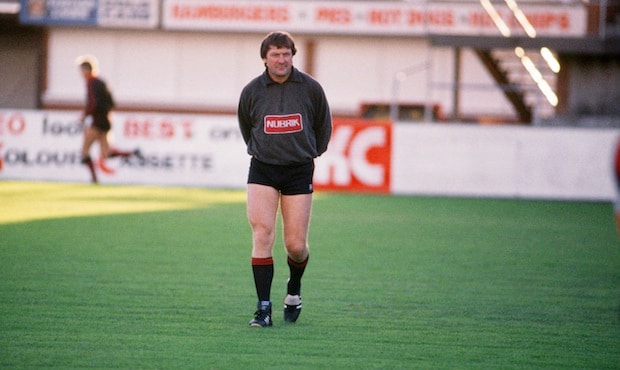On the back of the club’s ‘Don The Sash’ membership campaign launch for this year, essendonfc.com.au takes a closer look at the dominant decades of the sash over Essendon’s proud history.
Today we focus on the 1980s, a decade full of many highs, including the 1984 and 1985 premierships.
Having not won a premiership since 1965 and the following decade being dubbed the ‘slugging seventies’, Essendon supporters were understandably hungry for success.
In 1980, a 22-year-old Simon Madden was made the youngest captain in the League since 1972, with former captain Ken Fletcher moving aside for his younger lieutenant. While not making the finals that year, some young stars were emerging. Madden, Tim Watson and Terry Daniher were on their way to becoming club legends, Garry Foulds went on to play 300 games and Paul Vander Haar excited fans with his flamboyance. These young stars and others were bright lights in a young and hungry squad.
By the start of the 1981 season, there was a new Chairman in Greg Sewell and a new coach had been appointed. Kevin Sheedy had played 254 games for Richmond, but was returning to a club that he supported as a boy. Sheedy had beaten St Kilda premiership coach Alan Jeans for the position and there was a new wave of cautious optimism when the season got underway.

Kevin Sheedy took over as coach in 1981.
But things started badly for the new coach. With only one win in the first six rounds, Sheedy threatened to pull the boots back on and take the field himself before the Bombers’ on field fortunes changed. The team amassed 15 victories in a row, its best winning streak in 30 seasons, which saw the club gallop from no-hopers to premiership contenders. While this wasn’t to be the case, the many new appointments at Essendon in 1981 were in keeping with the dynamic approach of the Essendon Football Club. It seemed inevitable that Essendon would become a powerhouse again this decade.
After Essendon’s encouraging performances during the previous seasons, there was a feeling at the club that the 1982 season would be a year of success. There was an air of excitement when Neale Daniher was named as the club’s youngest ever captain replacing Simon Madden. Daniher was an unflappable and a sublimely skilled defender with a fine football brain and despite injuring his knee at the end of the 1981 season it was felt that Daniher would be back in time to lead the team in ’82. It wasn’t to be. After playing 66 games in his first three seasons the knee injury virtually ended his playing career and he never led his team onto the field. Ron Andrews was named as his replacement. The team finished 1982 in fifth place for the second year and Essendon was at the crossroads as it looked to 1983.
The club had finished fourth in the home and away season, and went on to defeated Carlton, Fitzroy and North Melbourne in the finals series. In Essendon’s first Grand Final appearance since losing the 1968 Grand Final, they faced a dominant Hawthorn line up who would comprehensively defeat the Bombers by 83 points. But retribution was soon to come.
Essendon’s 1984 and 1985 premierships will forever be remembered as coming after a miserable 1970s and beginning two decades of sustained success when the club played finals in 15 seasons out of twenty for four flags. Billy Duckworth took home the Norm Smith Medal in 1984 and the club’s sights were set on recreating the success of that year. And so they did. Winning back-to-back premierships in 1984 and 1985, critics were saying that the Essendon team was amongst the best of all time and Essendon legend Dick Reynolds raved that ‘this is the best Essendon side ever’, while Hawthorn captain Leigh Matthews told the Sunday Observer that ‘Essendon is the greatest football team of all time’.
Essendon was again an on-field powerhouse and a new generation of supporters was born.
By the end of the decade, the Bombers were still a force to be reckoned with throughout the competition, and they would face the 1990s with great hope.
*With credit to Flying High – History of the Essendon Football Club 1872-1996 by Michael Maplestone.



